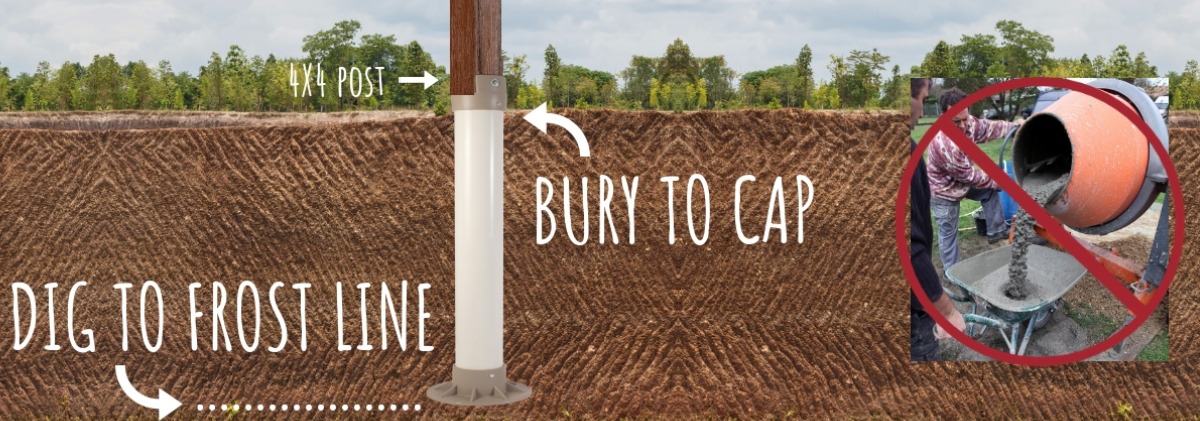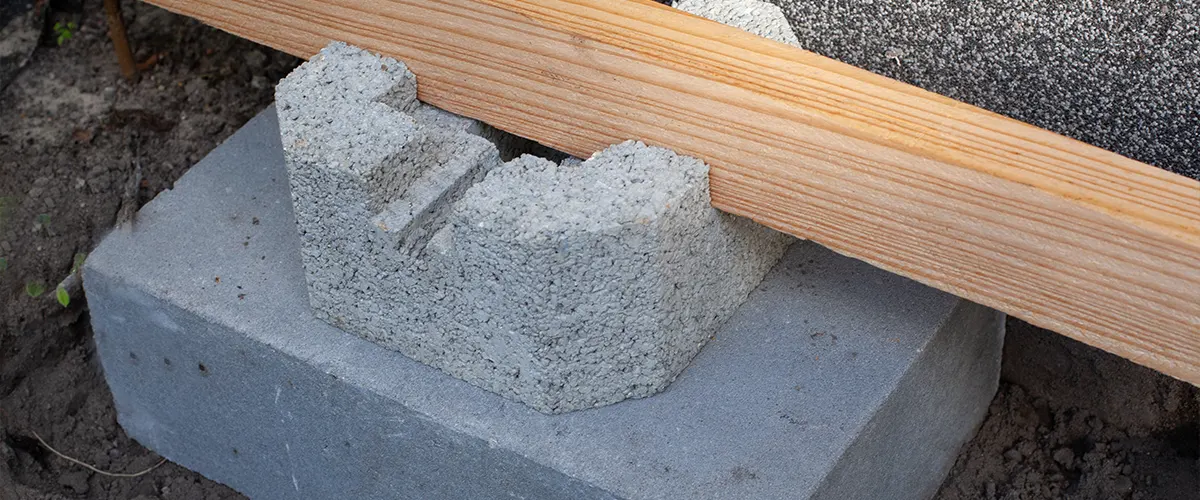Picking the Right Deck Footings for Stability and Toughness
The long life and safety of your deck depend greatly on the type of footings you select, as they provide the essential support and security to withstand the examination of time. In this conversation, we will discover the different types of deck footings, consider the important variables to consider when making a decision, and dive into the pros and cons of various options.
Sorts Of Deck Footings
There are numerous kinds of deck footings that can be used, each offering special benefits and factors to consider. One common type of footing is the concrete pier footing. These footings consist of a cylindrical hole loaded with concrete, which gives a strong structure for the deck blog posts. Concrete pier footings are reasonably easy to set up and use superb security, making them a preferred option for many deck jobs.
An additional sort of ground is the helical heap footing. Helical stacks are steel shafts with helical plates connected to them. These footings are mounted by screwing them into the ground, which develops a safe foundation for the deck. Helical pile footings are optimal for locations with difficult dirt conditions, as they can be set up in nearly any type of sort of dirt. If required., they likewise permit for simple change and leveling of the deck.
Alternatively, some builders choose precast concrete footings. These footings are constructed from resilient concrete and be available in different sizes and shapes to suit different deck layouts. Precast concrete grounds are convenient to set up and supply a stable base for the deck structure.
Lastly, another alternative is the post-in-anchor ground system. This kind of ground includes driving a steel support right into the ground and affixing it to the deck message. It supplies flexibility in regards to placing the deck blog posts and appropriates for decks with lightweight structures.
When selecting the right kind of deck footing, it is crucial to take into consideration elements such as dirt conditions, deck load, and neighborhood building regulations (Deck Footings). Consulting with an expert service provider or structural engineer can assist make certain the ideal ground is picked for a secure and risk-free deck
Variables to Consider When Choosing Footings
When picking the appropriate grounds for a deck, it is essential to very carefully consider different factors such as soil conditions, deck load, and adherence to neighborhood building ordinance. These elements play a substantial function in making sure the security and toughness of the deck framework.
Among the primary aspects to take into consideration is the soil problems. The sort of soil on which the deck will be constructed determines the sort of footings called for. Decks constructed on loosened or sandy dirts might require much deeper footings to provide adequate assistance and protect against settling. On the other hand, decks constructed on clay or large soils might need footings that can fit the dirt's tendency to expand and agreement.
An additional vital element is the deck tons. The weight of the deck, consisting of the materials used and any type of prospective online loads such as furnishings or gatherings, should be taken into account when picking grounds. The footings should be made to bear the weight of the deck and disperse it equally to prevent any architectural concerns or failings.
Finally, adherence to neighborhood building codes is paramount. Building regulations differ from area to area, and it is vital to comply with the certain demands established by the local authorities. Deck Footings. These codes guarantee that the deck is built securely and fulfills the required standards for architectural honesty and load-bearing capacity
Concrete Grounds: Advantages And Disadvantages

Concrete grounds offer several advantages and negative aspects when made use of as the structure for a deck. On the positive side, concrete grounds give exceptional security and longevity. Concrete is a solid and stiff product that can support heavy tons and stand up to numerous weather. It additionally has a lengthy life-span, making it a reputable selection for long-term use.
An additional advantage of concrete footings is their convenience. They can be poured into different sizes and shapes to suit various deck styles and configurations. Concrete footings can be tailored to fit the specific needs and demands of the deck structure.
Nevertheless, there are additionally some downsides to utilizing concrete footings. One significant drawback is the price and labor included in their installation. Concrete footings require excavation and typically require the help of heavy equipment. This can enhance the overall expense of the deck project and might need professional aid.

Helical Piers Vs. Sonotubes: Which Is Better?
In considering the foundation alternatives for a deck, the comparison between helical piers and sonotubes is critical in figuring out the superior selection. They are twisted right into the ground making use of hydraulic equipment, supplying a steady and resilient foundation for the deck.
When it concerns stability and longevity, helical piers have the upper hand. The helical plates on the piers create a strong grip with the dirt, changing or protecting against next page any activity of the deck. This is specifically advantageous in locations with unstable or moving soil problems. Sonotubes, on the other hand, depend only on the concrete filling for security, which might not offer the very same degree of toughness and resistance.
In regards to installation, helical piers are fairly less complicated and faster to mount contrasted to sonotubes. The hydraulic equipment utilized to turn the piers right into the ground guarantees a effective and quick procedure. Sonotubes, on the other hand, require digging holes and putting concrete, which can be labor-intensive and time-consuming.
Additionally, helical piers are a more versatile option. If required, they can be used in various soil conditions and can be adjusted or reinforced. Sonotubes, on the other hand, may call for added support, such as rebar, in certain dirt problems or areas with high lots needs.
Selecting the Right Footings for Your Deck's Measurements
For ideal architectural integrity, it is important to very carefully select the proper footings that line up with the dimensions of your deck. The measurements of your deck, including its size, elevation, and width, play a significant role in figuring out the kind and dimension of footings called for.
When picking footings for your deck, it is essential to take into consideration the load-bearing capacity of the dirt. The weight of the deck, integrated with the weight of any type of furniture or people on it, exerts see a considerable force on the footings (Deck Footings). It is important to select grounds that can adequately support this weight without shifting or sinking over time.
The dimension and shape of the grounds need to additionally be taken into consideration. Bigger decks with higher measurements require larger footings to offer sufficient security and support. The shape of the footings, whether they are round or square, depends on the style and format of the deck. Furthermore, the deepness at which the grounds are set up must be established based on the frost line in your area to stop any type of heaving or shifting due to freezing temperatures.
Verdict
In final thought, choosing the appropriate deck grounds is vital for making certain stability and resilience. Elements such as the type of grounds, the deck's measurements, and the pros and disadvantages of different options need to be considered.
These grounds are composed of a cylindrical hole filled up with concrete, which gives a solid structure for the deck blog posts. Concrete pier grounds are fairly very easy to set up and use outstanding stability, making them a popular selection for lots of deck tasks.
Precast concrete grounds are hassle-free to mount and supply a steady base for the deck structure.
It uses flexibility in terms of positioning the deck blog posts and is suitable for decks with lightweight structures.
Concrete grounds supply a number of benefits and negative aspects when used as the foundation for a deck.